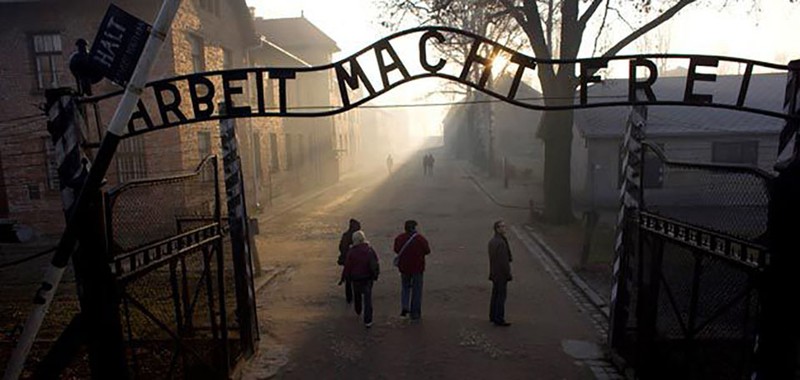On the morning of April 4, 1945, the United States 4th Armored Division and the 89th Infantry division arrived at the small German town of Ohrdruf. What they found, to quote General Dwight Eisenhower, were atrocities “beyond the American mind to comprehend.” In a small encampment outside the town, they found a shed, and piled inside were 40 human bodies in the last stages of emancipation, sprinkled with lime to cover the stench. These humans had died from starvation or were shot in the head. Testimonies from other prisoners estimated they represented only a fraction of the other 3,000 who had died in the previous three months. The Americans had discovered the first concentration camp.
Shortly after, Eisenhower ordered every American soldier not currently on the front lines to visit Ohrdruf so they could “see for themselves what they were fighting against.” He also ordered every citizen from the nearby town of Gotha to tour the camp. After witnessing the “cruelty, bestiality, and savagery,” there, the mayor of Gotha and his wife returned home and hung themselves.
THE STATISTICS
Despite the unparalleled horrors of mass extermination, according to a recent NPR article the Holocaust is falling into a second death—it is fading from memory. This year for Yom HaShoah, or Holocaust Remembrance Day, let us remember the deaths of those exterminated. Let us remember the deaths of approximately six million Jewish men, women and children.
According to NPR, 41 percent of Americans and 66 percent of millennials say they do not know about the Auschwitz death camp. Forty-one percent of millenials believe less than 2 million Jews were killed. Twenty-two percent of millennials say they have not heard of the Holocaust. And despite over 40,000 concentration camps and ghettos existing in Europe during the Holocaust, nearly half of all Americans cannot name one.
Elie Wiesel wrote, “If we forget, the dead will be killed again.” Let us remember those who perished in the Holocaust by remembering their story. Let us begin to remember by recounting the story of one concentration Camp.
AUSCHWITZ-BIRKENAU EXTERMINATION CAMP
Auschwitz was a network of concentration camps built and operated by Nazi Germany. However, Auschwitz-Birkenau, in particular, went on to become an extermination camp and a major site of the Nazis’ final solution to the Jewish question. Between early 1942 and late 1944, an estimated 1.3 million Jews were sent by transport trains and entered the gates of Auschwitz-Birkenau. Written over the gate were the words “Arbeit macht frei,” or “work sets you free.” But those who entered would not be working long—1.1 million would leave through the chimney tops, gassed with hydrogen cyanide.
To put these numbers into perspective, Biola’s total Fall 2017 student enrollment was 6,172 students. Auschwitz-Birkenau gassed men, women and children at the rate of the entire Biola student population every four days for two years. Or, considering Anaheim, Calif.’s population of 336,265, it would be equivalent to erasing the population of Anaheim every eight months for two years.
When we reflect on the Holocaust, it is not enough to reflect on it as an episode in the remote past in remote lands. The Holocaust tore the heart of Western Civilization: it inspired a generation of soldiers to “pursue the ranks of the guilty to the uttermost ends of the earth,” and it eviscerated a Jewish generation. The Holocaust reminds us that no matter how far we have progressed or how much we have been blessed, evil stands at the door and knocks.








